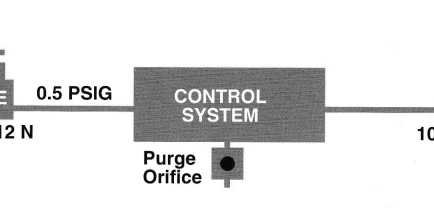Free UK Shipping over £100
Fast Shipping
Worldwide Shipping
Technical Sales Team

When working with air pressure regulators, there are typically many choices, each suitable for their particular application. However, in some instances, a more specialised regulator is required such as the need for accuracy.
Not all regulators are alike, which makes sense as different applications require different pressure ranges, capacity, and even port size.
The first thing that comes to mind when thinking about high-precision regulators is the need for accuracy. This is not to be confused with the generic misconception of accuracy meaning ‘better quality'. Whilst different brands offer a range of quality products, accuracy when discussing high-precision regulators relates to sensitivity, pressure, and droop.
Typically regulators fluctuate in order to control the downstream pressure where the internal springs are compressed to open and close valves. When a regulator is switched from a static to a dynamic operation, the regulator's sensitivity will depend on its ability to return to its original pressure.
when the flow through a valve increases, the output pressure will fall, meaning that all other things will become equal. Various things can affect a regulator's droop, including valve design, spring range, and flow.
High-precision regulators are required for many different applications, including tire manufacturing, medical supplies, food processing, pharmaceuticals, chemicals, public utilities, and electrical manufacturing to name a few.
The above application example is a purge system operated by and electronic control box. The purge system provides a constant flow of air in order to cool and ventilate an electronic control box. It's important to maintain consistent pressure with a specific flow rate. In order to do this, a Fairchild Model 10 back pressure regulator is used to function as the exhaust valve which would normally be the standard Model 10 regulator. This combination of regulators provides a system with no-bleed, while still have an exhaust capability. The no-bleed regulator system is necessary to control the purge flow rate.
The Fairchild Model 10 is a high capacity regulator that provides a uniform output pressure independent of supply pressure variation.
It is specifically designed for applications that require high capacity and accurate process control.
The Fairchild Model 100 is a spring opposed diaphragm operated, pressure regulating valve with a large flow capacity.
The is designed for use in control systems running unusually high flow capacities.
The Siemens Moore 40, 41 and 42 Precision Pressure Regulators control air pressures in applications where precise and dependable regulation is required.
Of course, if you require any assistance in selecting the right precision regulator for your application, our expert team are on hand to advise you on the best solution. As official distributors of the world's top brands in process control, we're sure we can help solve your problem.
Contact our technical sales advisors here.
Our team of engineers are fully equipped to provide bespoke system design and manufacture.
This process involves specifying, procuring, calibrating and maintaining instrumentation and control systems for industrial and commercial process control applications.
Call our technical sales team for advice

This site uses cookies to monitor site performance and provide a more responsive and personalised experience. You must agree to our use of certain cookies. For more information on how we use and manage cookies, please read our Privacy Policy.